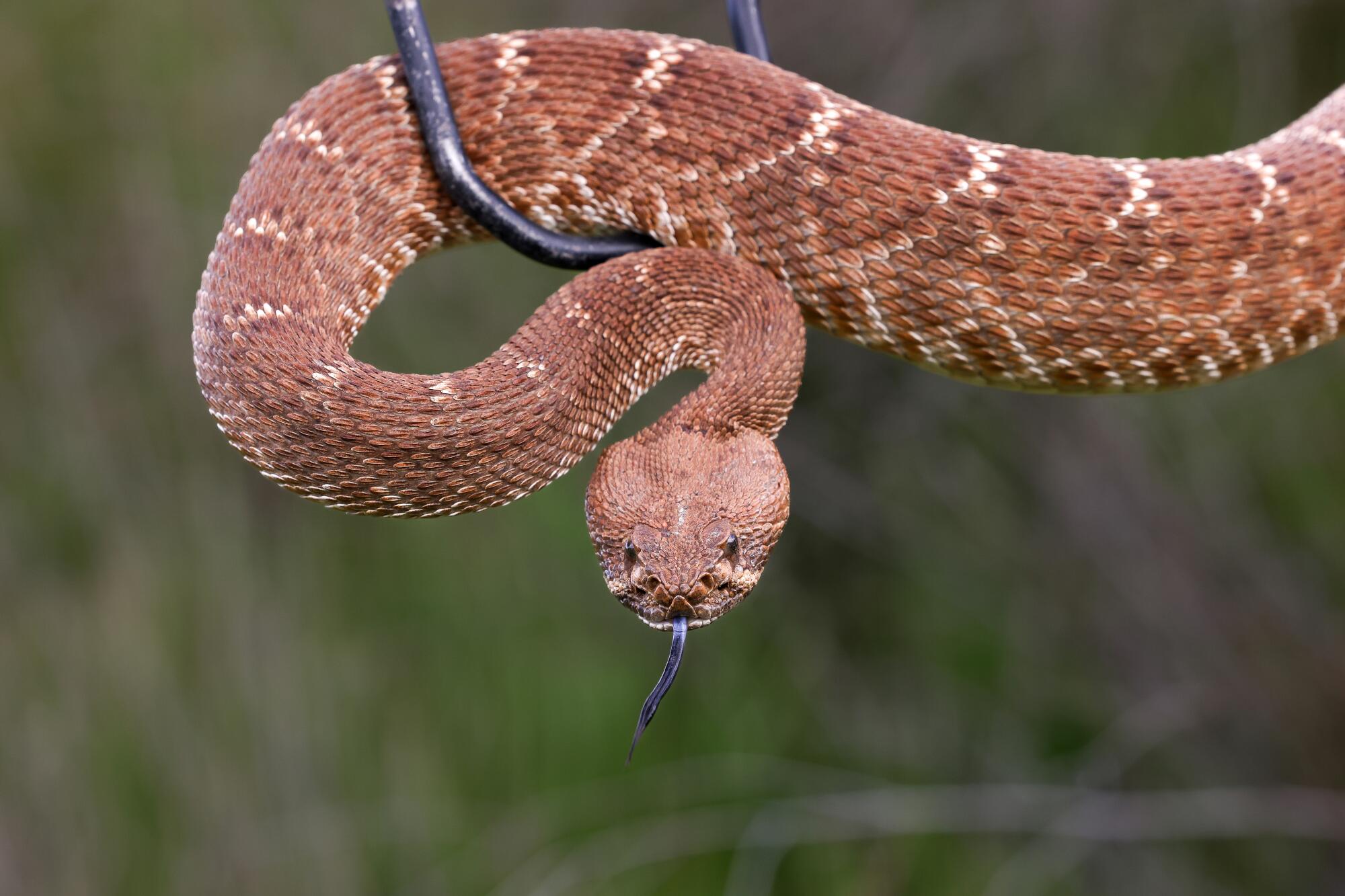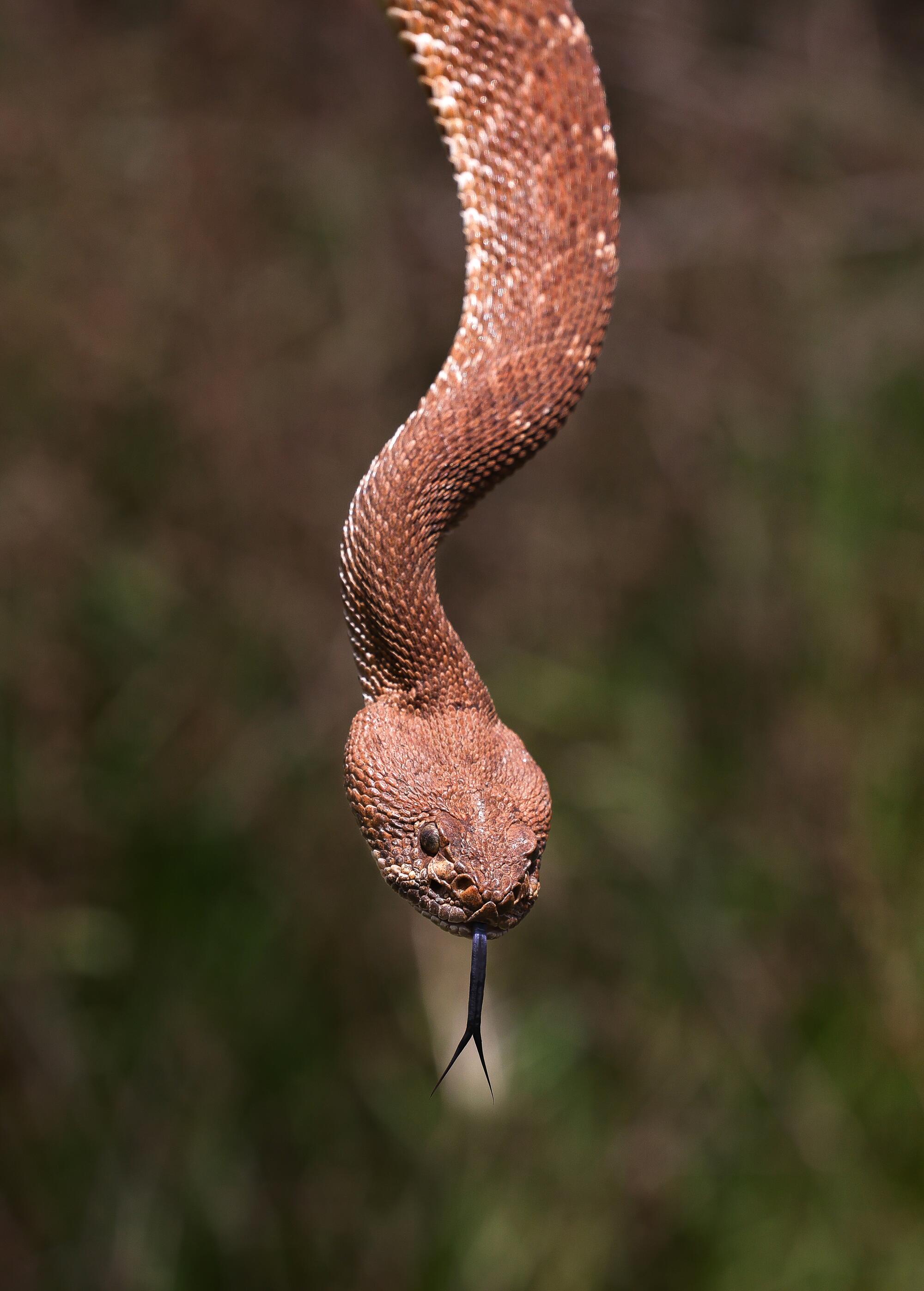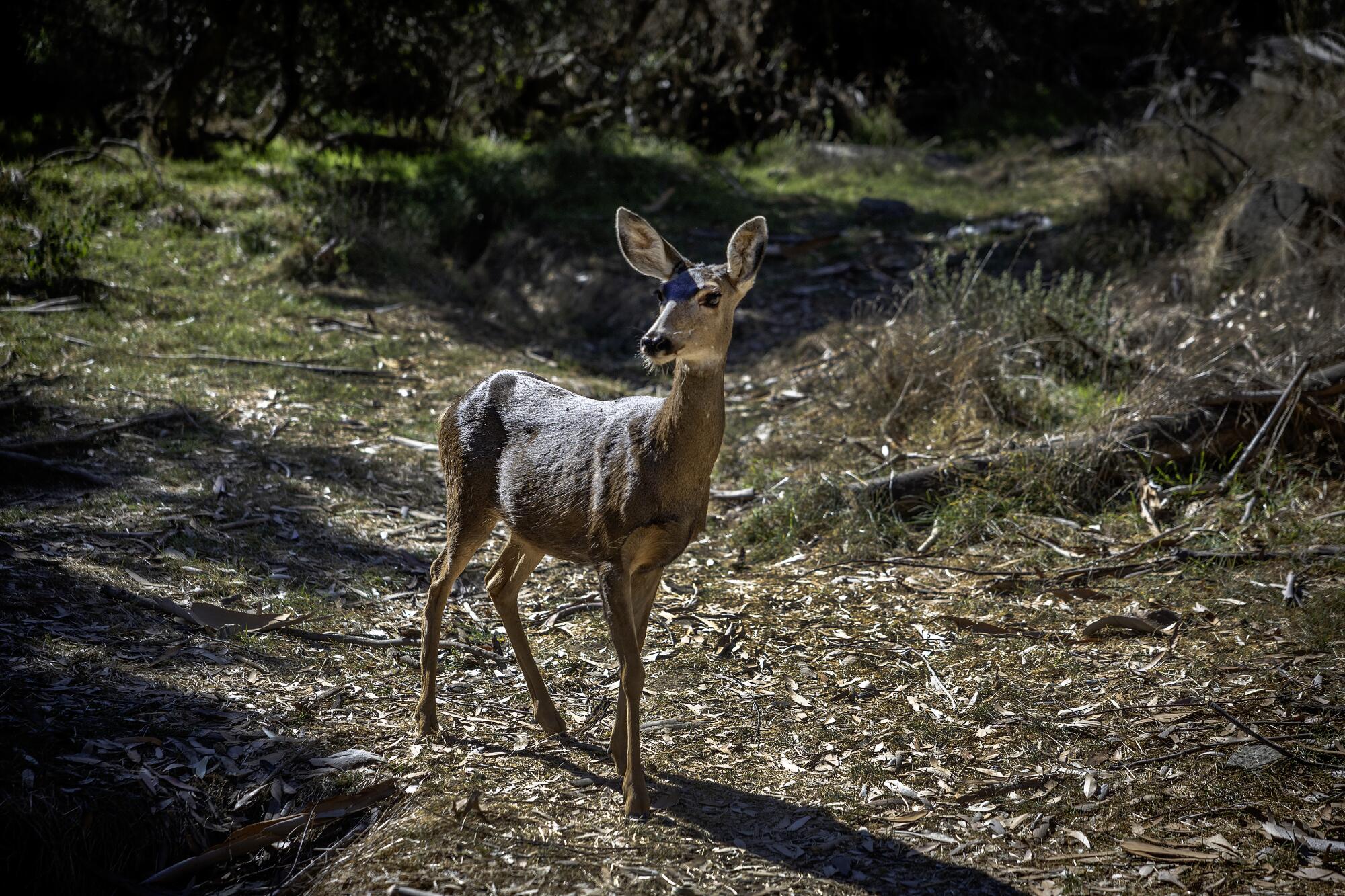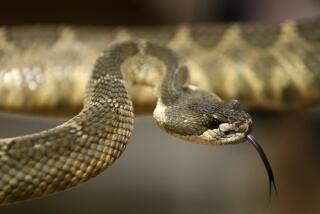
- Share via
Discerning what makes rattlesnakes tick is a life’s work for researchers like William Hayes. So if he wants to introduce you to the biological complexity that makes them worthy of study, be prepared to follow a deliberately cautious route climbing over boulders and stepping over logs.
Take San Timoteo Canyon, a river valley near the San Bernardino County city of Redlands offering all the creature comforts rattlesnakes need to multiply and prosper: rock outcrops on which to bask in the sun, thickets of vegetation for camouflage, and loads of ground squirrels to feed on.
On a recent sunny morning, it didn’t take Hayes long to find what he was looking for: a red diamond rattlesnake buzzing a fearsome drum roll as it slithered through tall, lush grass and, just a few feet away, a Pacific rattlesnake, its forked-tongue flicking as it peered at him from the shade of a bush.
“Rattlesnakes are among the most feared, misunderstood and abused animals of all,” the 62-year-old said as he nodded toward the venomous serpents. “Yet, they are not all that different from us. They, too, have fears, emotions and find comfort in companionship.”

Recent studies have led Hayes and a team of mostly Loma Linda University researchers to the provocative conclusion that rattlesnakes are anything but just instinctive people killers. They are individuals in complex communities that show a spectrum of temperament and emotions that can persist over time in different situations.
A year ago, the team discovered the first evidence that a stressed rattlesnake can find solace in the presence of a nearby companion, or “friend,” leading to a healthy, stable heart rate, similar to the way humans calm each other down.
Aggressive and impactful reporting on climate change, the environment, health and science.
Now, they have seized on a new explanation for the unusually heightened levels of defensive behavior of rattlesnakes on Santa Catalina Island: It pays to rattle more, bite more often and inject more toxin on an island where they could be trampled or stomped to death by imported goats, pigs, bison and deer, according to a study published recently in the scientific journal Toxins.
“The results of this study unambiguously revealed substantially greater defensiveness in Catalina rattlesnakes compared to mainland rattlesnakes,” the study says.
The finding is particularly significant because it suggests a paradoxical exception to “island tameness,” the phenomenon noted by Charles Darwin 180 years ago: Finches, fur seals and marine iguanas on the Galapagos Islands were more docile than mainland birds, seals and reptiles. Darwin attributed their tameness to a lack of predators and large nonnative ungulates in their native haunts.

Not so on Catalina, about 22 miles off the coast of Los Angeles.
Humans are believed to have populated Catalina about 8,000 years ago, bringing with them the large nonnative mammals whose density “has likely exceeded that on the mainland in recent centuries and up to the present,” the study says.
Over the last three decades, the conservancy that owns nine-tenths of the island has shot, trapped, and shipped out all the invasive goats and pigs, and nearly all the bison that were literally eating away the island’s native vegetation.
Now, a plan to use helicopter-mounted sharpshooters to kill a remnant mule deer population that varies from about 1,500 to 2,000 roaming the mountains of Catalina has ignited a storm of protest among residents of the popular resort destination and prompted calls to state wildlife authorities to block the hunt.
In the meantime, Catalina’s rattlesnakes are biting back at deer herds with all the rattling and venom they can muster, the study says.
“By introducing mammalian predators and antagonists to Catalina, humans have made encounters with rattlesnakes more dangerous,” the study suggests, “a fact that should be appreciated by those who currently oppose the removal of deer from Catalina.”

Julie King, a co-author of the study and expert on Santa Catalina Island ecology, said, “The rattlesnakes see deer as a threat that could squash them.”
“So they have developed a social language and behavior,” she said, “that warns, ‘Hey, I’m down here, don’t step on me or you’ll be sorry.’ ”
The study suggests that an additional potential cause for the unusual aggressiveness of the Catalina rattlesnakes is that they are smaller — on average — than those on the mainland. Even though they are smaller, they prey upon native ground squirrels and deer mice with formidable teeth and claws that are larger than those on the mainland.
“To minimize the risks of retaliatory injury,” the study suggests, “rattlesnakes and other vipers have evolved unique strategies to acquire dangerous prey, including the release of prey immediately after the envenomating bite, followed by chemosensory searching to relocate their meal, which often travels meters or before succumbing to the venom.”
The study points out that these behavioral changes can increase “risks associated with humans interacting with snakes from this population, and potentially suffering severe or even fatal envenomation.”
Gerad Fox, 42, a co-author of the study, said, “Our findings, and the recent discoveries of others, have only scratched the surface of rattlesnake personality.”
“There is so much more to learn,” Fox added. “Bit by bit, we’re building a better understanding of an important part of our natural world, one that deserves our respect and protection.”









